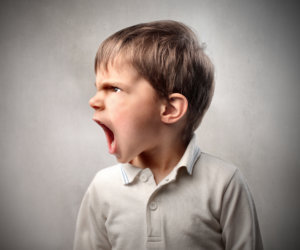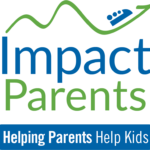It’s Your Fault

I recently had a conversation with a client about her son. She explained, “that child blames everyone else when he gets upset.” You’ve probably heard it before: someone gets angry and lashes out, blaming it on the first person they see: “It’s Your Fault!” It’s hard not to worry when a child doesn’t take responsibility for their actions.
My client had been told by her son that it was her fault he stubbed his toe and her fault the toys weren’t cleaned up when he wanted more floor space. She wanted to figure out how to help her son take more responsibility for what happens in his world.
So, it got me thinking. How do we guide parents when their child, teen or young adult blames everyone else and doesn’t take responsibility?
Why Do Kids Blame Everyone?
This was a perfect opportunity to talk about the relationship between triggers and blaming. Brene Brown offers a great explanation for that – whether for adults or children.
Brene Brown is a thought-leader, well-known for her research around vulnerability and shame. In one of her videos on blaming she tells a story from her own experience as a “blamer.”
Synopsis: Standing in her kitchen at breakfast, wearing white pants and a pretty blue shirt, she spills her coffee all over the front of her pants. The first words out of her mouth were, "Damn it, Steve," (her husband). Steve was not in the kitchen. He was nowhere nearby. He had nothing to do with the coffee. But her first thought was to blame him.
She reflected on it, searching for a rational reason for it to be Steve's fault. Since they have a deal that she gets to go to bed at 10pm, she was tired because, the night before, Steve got into bed late. In fact, she was so tired she had to have a second cup of coffee. And if she hadn't had that second cup of coffee, she wouldn't have spilled the coffee. So, it was his fault. Right?
Brene could easily rationalize why it was Steve's fault. But deep down she knows it’s not. In truth, she was reacting to a frustrating situation, and blaming him gave her a way to release some of the energy of that frustration. Steve just happened to be the scapegoat. In other words, blaming is a way to release emotional energy. It's no different than yelling.
After sharing this with my client, we reframed her son’s behavior. When her child blames everyone, it’s a way to release emotional energy, a natural reaction when he's upset. If she sees him as a kid who's triggered and needs to release the emotional energy of his frustration, instead of as a child who doesn’t take responsibility, she’s able to be more empathetic and stay out of judgment.
When you start with compassion, you can begin to help your child release emotional energy with healthier behaviors than blaming. For example, "Wow, you’ve got a problem, I can tell you are upset. It makes perfect sense. You want to be watching TV and the toys are everywhere." Or, "You want to play Legos and there are toys in your way. That’s so frustrating." Your compassion gives your child the opportunity to release emotional energy by griping for a second, instead of lashing out. When a child feels their parent is on their side, they’re less likely to blame everyone else.
Article continues below...
Minimize Meltdowns!
Download a free tipsheet "Top 10 Ways to Stop Meltdowns in Their Tracks" to stop yelling and tantrums from everyone!
Moving Forward to Taking Responsibility
Once you’re no longer a battle of blame, the conversation can shift into a cooperative effort to take care of the thing that’s actually the problem, like the toys needing to be picked up. When a parent shifts from opponent to ally, from enemy to coach and helper, the conversation can go something like this:
"I can tell you’re really mad about the toys not being picked up. So, what would you like to do about it?"
"Will you clean it up please, mommy?”
"I’ll help you. Will you help me? Let’s do it together. I bet we can get it done really fast."
Even if my client is still doing some, or even nearly all of the work, this is a great foundation for her child to learn to take responsibility for his things. He’s unraveled enough from the trigger that he can help her, which is the next step: collaboration. Collaboration can look like this:
"I'm going to pick up 17 toys. How many will you pick up?"
"I'll pick up one."
"Okay, awesome. Way to go. Then let’s see how many are left, okay? We’ll get this done together."
Your collaboration can grow incrementally from there, making a game of it for your kid! "Well, last time you only picked up one. I bet you can pick up four this time."
Making it fun, maybe even making it into a competition or a challenge, is a great way to engage your child’s complex brain. But if your child is blaming everyone else, triggered and shutting down, then reacting when they don’t take responsibility is not likely to teach them to take responsibility. When you start with compassion, you can make that “It’s your fault!” disappear and open the path to a collaborative solution to the real problem at hand. And that will help everyone – including you! – be slower to throw blame.

